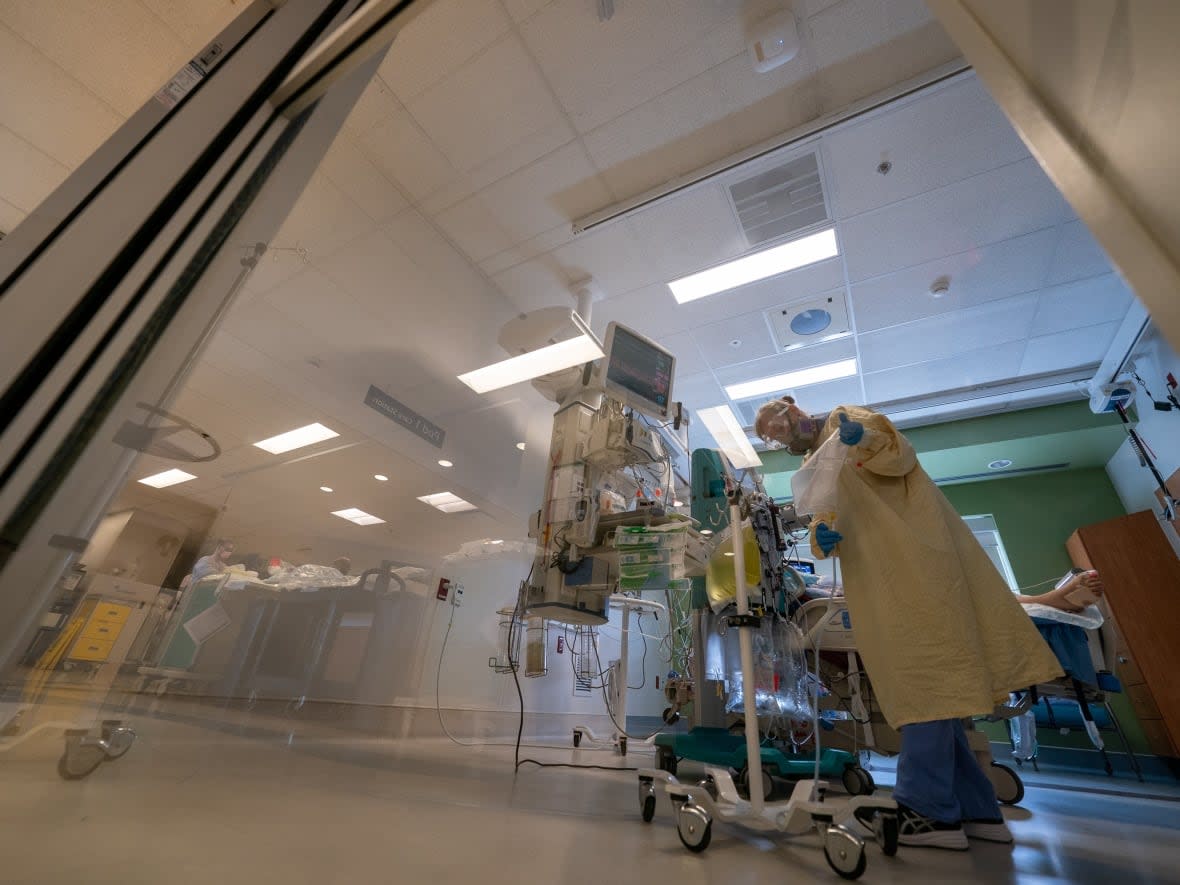Modelling shows B.C. likely undercounting death toll from COVID-19

British Columbia could be significantly undercounting its COVID-19 death toll, according to modelling data from a national project.
The project, led by University of Toronto professor Dr. Tara Moriarty, looks at the risk of future severe outcomes from COVID-19 for every province and region in Canada.
It has been tracking various metrics, including excess mortality resulting from COVID-19 and the effect of vaccines in reducing deaths and cases.
One of the metrics tracked is the difference between expected deaths and reported deaths — the former an estimate by epidemiologists based on infection rates, vaccination rates and fatality rates. Reported deaths reflect the official government count.
Deaths per day due to COVID-19 in B.C., daily total and rolling average
According to that estimate, B.C. should have seen more than 980 deaths from Dec. 18 to Feb. 11 compared to just over 340 cases that were reported officially.
"Outside of Quebec, which captures almost all of its COVID deaths, the rest of Canada in general historically under-reports, under-detects, about 50 per cent of its COVID deaths," Moriarty told CBC News.
B.C. is currently experiencing a sustained spike in deaths, with the seven-day rolling average of COVID deaths up to 10.29 per day as of Friday.
Moriarty says recent testing changes in B.C., which reserves COVID-19 tests for higher-risk populations, further complicate pandemic analysis.
She says predicting the number of deaths beyond February is not possible given that modellers do not know how the virus is circulating in the community.
"We really do have to resume or have surveillance testing in a way that's meaningful," she said.
"We can't wait till we see [numbers of] hospitalizations and deaths, because Omicron moves so fast that we can't wait to see those lagging indicators to be able to respond."
Excess mortality
Moriarty's model also looks at excess mortality — untimely deaths not expected in a given time period — in order to calculate the impact of COVID-19 on the population.
That model shows B.C. is second only to Alberta when it comes to excess deaths per 100,000 people over the past two years. The calculation was adjusted for other disasters like the 2021 heat wave and the toxic drug crisis.
Dr. Sarah Otto, a professor at the University of B.C. and a member of an independent COVID-19 modelling group in the province, says that the research shows that COVID is likely a significant factor in those excess deaths.
According to Otto, the rapid spread of COVID-19 could lead to an increase in deaths months later, pointing to research that showed a drop in global life expectancy from 2020 to 2021.
"Increasingly, there's evidence of longer term cardiovascular impacts from COVID that can last for a long time," she said.
Moriarty and Otto both said that B.C. tends to report the cause of all deaths well after they have occurred. They are asking for post-mortem COVID testing in order to estimate its true toll on the population.
A spokesperson for the Ministry of Health says B.C. only reports COVID deaths that occurred "with no period of complete recovery between illness and death".
Provincial Health Officer Dr. Bonnie Henry said the province is trying to ensure it is not missing deaths due to COVID-19.

"One of the things we did from the very beginning is we have a relationship with the coroner's service. Any unexpected death in the community … is investigated for COVID," Henry said in a news conference on Jan. 25.
"We are confident there's not a lot of people dying from COVID in the community that we don't know about."
The health ministry spokesperson did confirm that B.C. tested unnatural deaths for COVID-19 if it was suspected, but did not respond to a question regarding testing after all deaths.


